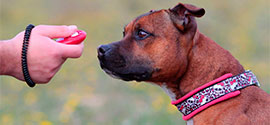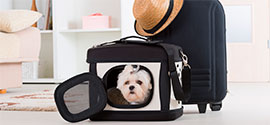Dog Training Collars
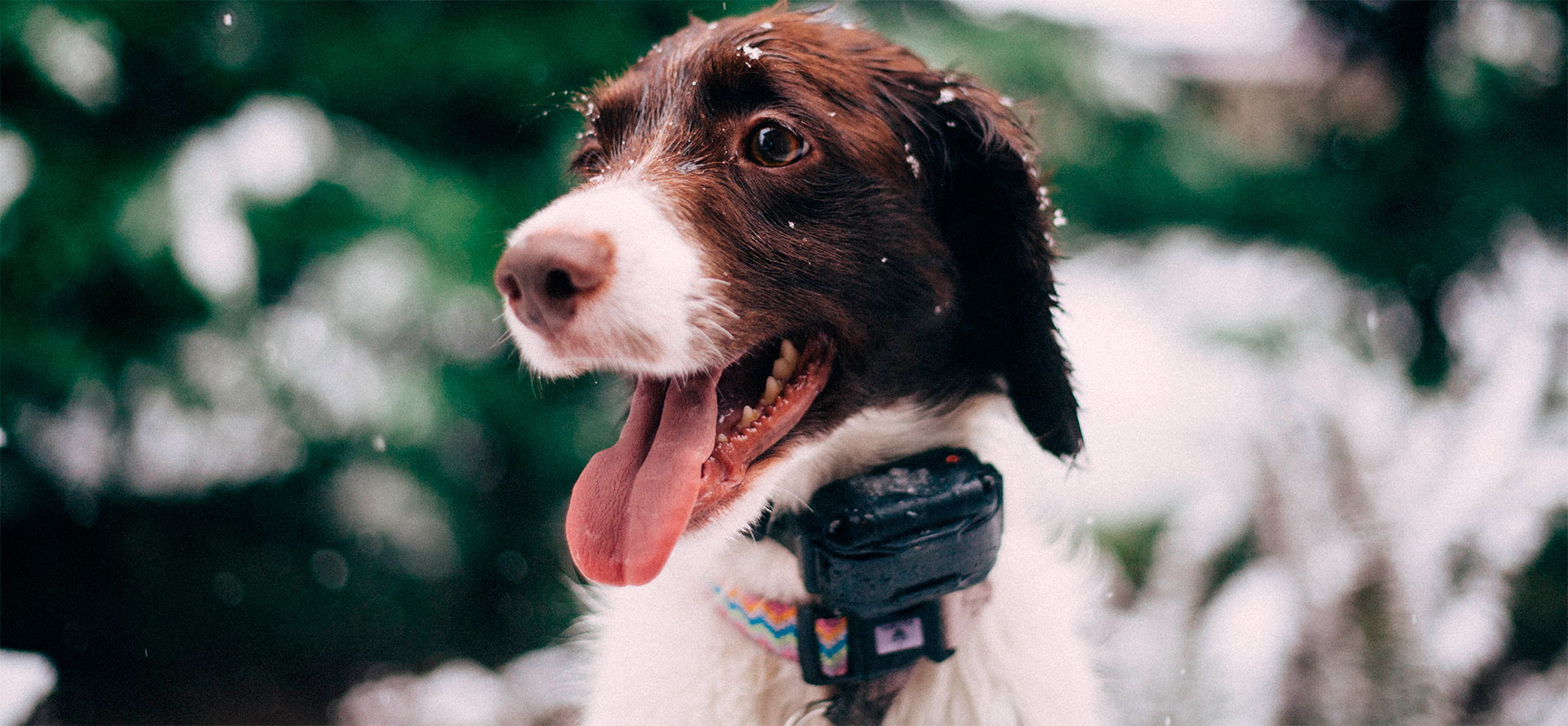
It was only a matter of time before technology introduced a revolutionary approach to training our dogs. Today, pet parents have more options to keep their four-legged friends in check than could have been imagined decades ago. This post discusses dog training collars and which ones are best for small dogs and larger ones.
A dog training collar is a tool that modern pet parents use to train their dogs in a more orderly fashion, or at least as close to it as possible. Dog training collars employ ingenious techniques that bring no harm to your pet, yet achieving the desired goal. If you have an interest in what dog training collars are about, you’re in the right place. That is, whether or not you’ve used these devices in the past, you have a thing or two to learn from our best dog training (shock) collar reviews!
Best Dog Training Collars in 2025
| Products | Information | Price |
|---|---|---|
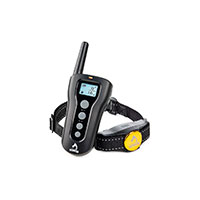
PATPET P320 Remote Dog Training Collar
|
Range of coverage: 300 yards
Estimated battery life: Remote - 15 days; collar - 7.5 days
Lifestage: Adult
Breed size: Medium breeds, large breeds
Closure type: Buckle
Collar type: Remote training - noise, remote training - vibration, remote training - static
Features: Reflective, waterproof
Material: Plastic
Recommended pet weight: 20 - 90 pounds
Recommended pet age: 6 months and up
Compatibility: Rechargeable |
Check Price |
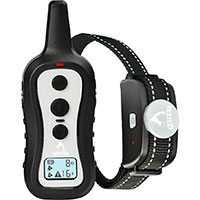
PATPET P301 Remote Dog Training Collar
|
Range of coverage: 300 yards
Estimated battery life: Remote - 11 days; collar - 11 days
Lifestage: Adult
Breed size: Medium breeds, large breeds
Closure type: Buckle
Collar type: Remote training - static, remote training - vibration, remote training - noise
Features: Reflective, long prongs
Material: Plastic
Recommended pet weight: 20 - 90 pounds
Recommended pet age: 6 months and up
Compatibility: Battery powered |
Check Price |
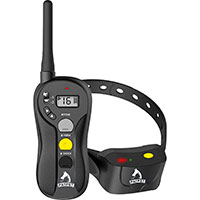
Outdoor Remote Dog Training Collar
|
Range of coverage: 600 yards
Estimated battery life: Remote - 8 days; collar - 4 days
Lifestage: Adult
Breed size: Medium breeds, large breeds
Closure type: Buckle
Collar type: Remote training - noise, remote training - vibration, remote training - static
Features: Waterproof, long prongs
Material: Plastic
Recommended pet weight: 30 - 110 pounds
Recommended pet age: 6 months and up
Compatibility: Rechargeable |
Check Price |
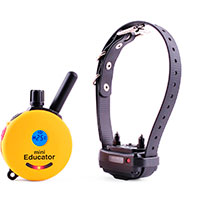
Educator Range Remote
|
Range of coverage: 1/2 mile
Estimated battery life: Remote - 24 - 72 hours; collar - 24 - 72 hours
Lifestage: Adult, puppy
Breed size: Small breeds, medium breeds, large breeds
Closure type: Buckle
Collar type: Remote training - vibration, remote training - noise, remote training - static
Features: Indoor use, outdoor use, waterproof
Material: Plastic, nylon
Recommended pet weight: Over 5 pounds
Recommended pet age: 6 months and up
Compatibility: Battery powered, rechargeable |
Check Price |
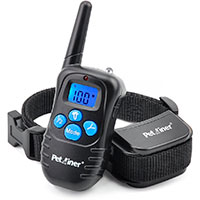
Petrainer 998DRB Dog Training Collar
|
Range of coverage:330 yards
: Estimated battery life: Remote - 7 days; collar - 3 days
Lifestage: Puppy, adult, senior
Breed size: Small breeds, medium breeds, large breeds, all breeds
Closure type: Buckle
Collar type: Remote training - vibration, remote training - static, remote training - noise
Features: Indoor use, outdoor use, multi-dog system
Material: Nylon, plastic, silicone
Recommended pet weight: 10 - 150 pounds
Recommended pet age: 6 months and up
Compatibility: Rechargeable |
Check Price |
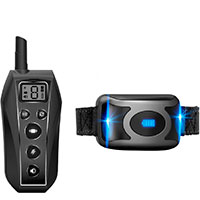
GroovyPets Waterproof Training Shock Collar
|
Dimensions: 7 x 6 x 2 inches
Weight: 1.0 pounds
Range of coverage: 650 yards
Lifestage: Adult
Breed size: Small breeds, medium breeds, large breeds, all breeds
Closure type: Buckle
Collar type: Remote training - static, remote training - vibration, remote training - noise
Features: Waterproof, outdoor use
Material: Plastic
Recommended pet weight: 15 pounds and up
Recommended pet age: 6 months and up
Compatibility: Rechargeable |
Check Price |

Rechargeable Dog Training Collar
|
Dimensions: 5.82 x 1.88 x 1.25 inches
Weight: 11.2 ounces
Range of coverage: 320 yards
Estimated battery life: 45 days
Lifestage: Adult
Breed size: Small breeds, medium breeds, large breeds
Closure type: Buckle
Collar type: Remote training - vibration, remote training - noise, remote training - static
Collar width: 1 3/8 inch
Neck size: 7.09-22.83 inch
Material: Nylon, plastic
Recommended pet weight: 8-150 lbs
Recommended pet age: Over 6 months
Compatibility: Battery powered, rechargeable |
Check Price |
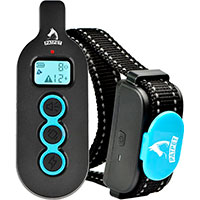
PATPET Remote
|
Dimensions: 5.82 x 1.88 x 1.25 inches
Weight: 11.2 ounces
Range of coverage: 320 yards
Estimated battery life: 45 days
Lifestage: Adult
Breed size: Small breeds, medium breeds, large breeds
Closure type: Buckle
Collar type: Remote training - vibration, remote training - noise, remote training - static
Collar width: 1 3/8 inch
Neck size: 7.09-22.83 inch
Material: Nylon, plastic
Recommended pet weight: 8-150 lbs
Recommended pet age: Over 6 months
Compatibility: Battery powered, rechargeable |
Check Price |
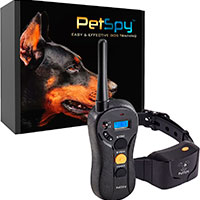
Waterproof Dog Training Collar
|
Dimensions: 6 x 1.5 x 3 inches
Weight: 13.6 ounces
Range of coverage: 650 yards
Estimated battery life: Remote - 72 hours; collar - 72 hours
Lifestage: Puppy, adult, senior
Breed size: Small breeds, medium breeds, large breeds
Closure type: Buckle
Collar type: Remote training - vibration, remote training - static, remote training - noise
Features: Long prongs, indoor use, outdoor use, waterproof
Material: Plastic
Recommended pet weight: Over 10 pounds
Recommended pet age: 6 months and up
Compatibility: Battery powered, rechargeable |
Check Price |
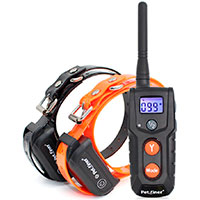
Petrainer Waterproof
|
Dimensions: 7.6 x 5.8 x 1.8 inches
Weight: 1.16 pounds
Range of coverage: 330 yards
Estimated battery life: Remote - 7 days; collar - 3 days
Lifestage: Adult, senior, puppy
Breed size: All breeds
Closure type: Buckle
Collar type: Remote training - noise, remote training - static, remote training - vibration
Features: Waterproof, indoor use, outdoor use, multi-dog system
Material: Plastic, silicone
Recommended pet weight: 10 - 150 pounds
Recommended pet age: 6 months and up
Compatibility: Rechargeable |
Check Price |
View all Dog Training Collars
Reading articles like this isn’t just to gain knowledge of optional good practices of a good dog parent but to do your due diligence in fulfilling the responsibilities you signed up for as soon as you decided to own a pet. We understand that dogs can be quite a challenge to keep under control. Many techniques don’t work when trying to do. It’s a beautiful sight to see dogs that are well-trained because pet parents know how tasking it must have been to achieve that. If you’re a pet patent that still hasn’t figured out how to make your furry friend listen to you, know right now that dog training collars will be a game-changer for you. Without further ado, let’s discuss in detail what a training collar is. Make sure to read to the end to see a bonus tip.
What is a Dog Training Collar?
A dog training collar is a training tool that allows pet owners to issue a correction stimulation to their dogs when they act wrongly. It is also known as a dog training shock collar that gives owners remote access to their dogs. A training shock collar consists of the collar and remote control transmitter. The transmitter activates and controls the intensity of the shock that a dog receives when acting wrongly. The reasoning behind the dog collar is that when a dog acts in a way that the owner does not approve of, the owner can click on a button on the transmitter. Once the button is clicked, a signal is transmitted to the collar to give the dog a mild correctional shock. The intensity of this correctional shock depends on what setting the owner has set the transmitter at.
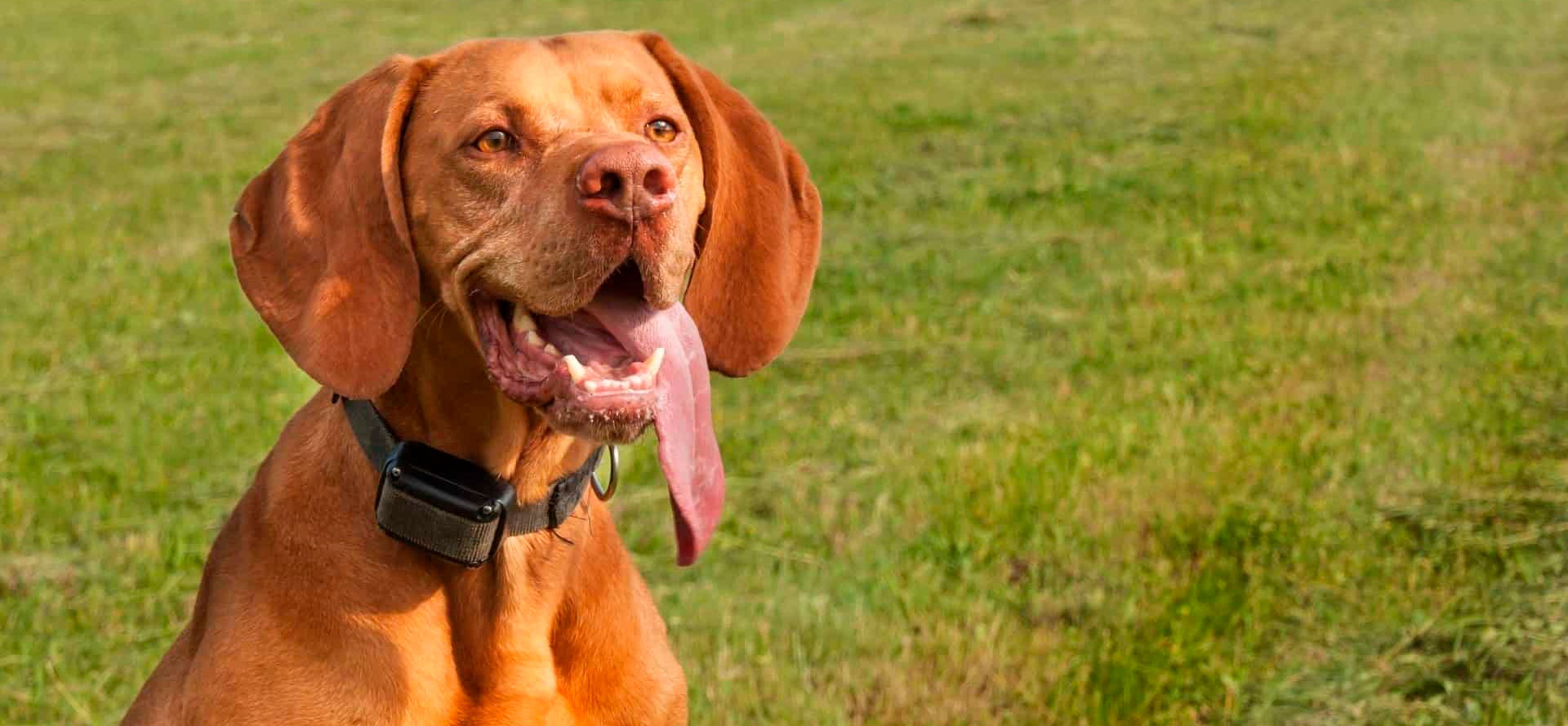
There’s a reason why the transmitter has different levels of shock intensity that can be issued to the dog. Each dog reacts to the stimulation differently. Larger dogs require a stronger intensity than smaller dogs, understandably. We’ll address the shock collars for small dogs and those for large dogs in a later section of this article.
For easier understanding, let’s make a comparison. Some watches beep repeatedly when a runner is not meeting up to a pre-defined target. This beeping can be disorientating and in a bid to get the watch to stop beeping, the runner does what is needed to meet the target. Similarly, once the stimulation is issued to the dog via the collar, the dog is compelled to stop whatever wrong act it was doing. Doing this repeatedly will eventually result in the dog stopping the act completely.
There are two main reasons why dog owners use dog training collars. They include:
- Correcting bad or unwanted behavior.
- Reinforcing commands to make dogs obey.
However, it’s not that simple. A shock collar training must be carried in such a way that the dog knows that the shock stimulation is a result of some negative attitude and not its owner wilfully causing it pain. So how does a pet owner use a remote dog training collar the right way? See below.
How to Train a Dog With a Shock Collar?
You now know what a training collar is and probably want to get one but how will you use it? There is a level of precaution that you must take when using a training collar. In addition to the basic method of using the dog collar for training, this section teaches the necessary precautions, so keep reading.
Read the instruction manual
There are various models of training collars for dogs out there and although they all work similarly, there are differences that are worth knowing about. Being a device that will follow your dog everywhere for a relatively long time, you want to make sure not to miss any valuable information regarding features that the training collar in question may have.
Insert batteries into the collar and its transmitter
Dog collars for training stimulate dogs by using mild electric charges. As with most mobile electronic devices, you need a battery! So remember to buy fitting batteries for both the collar and the transmitter.
Fit the collar to your dog
Now, attach the collar to your dog with the prongs having gentle contact with the dog; don’t have too tight around its neck causing discomfort. Some dog training does not have prongs but features some other means of issuing the stimulation. This is one reason to read the instruction manual of whatever model you’ve purchased.
A good practice when using the dog training collar is not to turn it on for the first week. You want your dog to attribute the shock stimulation to bad behavior and not the collar. So if you turn on the collar and issue shock stimulation relatively as soon as you attach the collar, the dog may figure out that the shock is a result of the collar. So you want to have the dog comfortable with the collar first before turning it on.
Begin using the dog training collar
After giving Fido the time needed to adjust to the new collar around its neck, you can turn on both the collar and the transmitter. Remember that there is no shock stimulation issued even when the collar and the transmitter are both turned on until you issue a stimulation via the press of a button on the transmitter. Your dog can go about the day like normal until it starts doing things you don’t approve up. Then you can issue a stimulation to correct the bad behavior.
As loosely said earlier, if your dog does not listen to commands, you can also use the dog training collar to reinforce those commands. With time, your dog will associate the stimulation with a penalty for bad behavior and ignoring commands. Remember to choose the setting that works for your dog. You only want your dog feeling a mild simulation. You want to correct it not hurt it. There are different settings for small and large dogs. Below, we take a look at the characteristics of the best shock collars for dogs that vary in size.
More choices available
Shock Collars as Training Tool For Small Dogs
Small dogs are more energetic than larger dogs. They are proactive and can be almost everywhere at the same time. A pet owner looking to control a small dog without a dog shock collar will have quite a task to complete. There are dog training collars that were designed for the Small dog. The core factors are the size of the dog’s neck and how comfortable it will be. Small dogs usually weigh around 7kg to 15kg, so the collar is kept at a weight that makes it easy for the dog to carry.
The best dog training collars are designed to be comfortable for dogs. Only when they act out or wrongly should they ever get a stimulation, otherwise keep the transmitter idle. So when you’re out shopping for the best dog training collar to have in your home, you want to factor in the size of your dog as it is a major factor. You don’t want your little furry friend held down and immobile because there’s a large inconvenient electric dog collar around its neck. There is no shortage of dog training collars for small dogs. If you do your due diligence, you’re sure to find the best shock collar for your dog. Here are some features to look out for when searching for a dog shock collar:
- Rechargeable collars and transmitter.
- Remote range (how far the collar can be to receive signals from the transmitter in your hand).
- Waterproof features.
- Beep alert features.
- Multiple training modes, each with different predefined settings.
- Convenient size for your small dog.
Once you finally find one that works for your four-legged friend, follow the guide above on how to use a training collar for dogs. Now, you’ve done all that’s expected of you as a responsible pet owner, as regards getting a training collar for your dog. The final steps in the training process will now be between your dog and yourself and depend largely on how well your dog responds to corrections.
For Large Dogs
Large dogs may be less energetic than their smaller cousins but that doesn’t mean they are saints either. Large dogs can be just as rebellious and this is why there are dog training collars for large dogs out there. The number of models is limitless and you’re sure to find one that works for your dog. A core factor when choosing a shock collar for large dogs is how convenient the dog will feel with the collar around its neck.
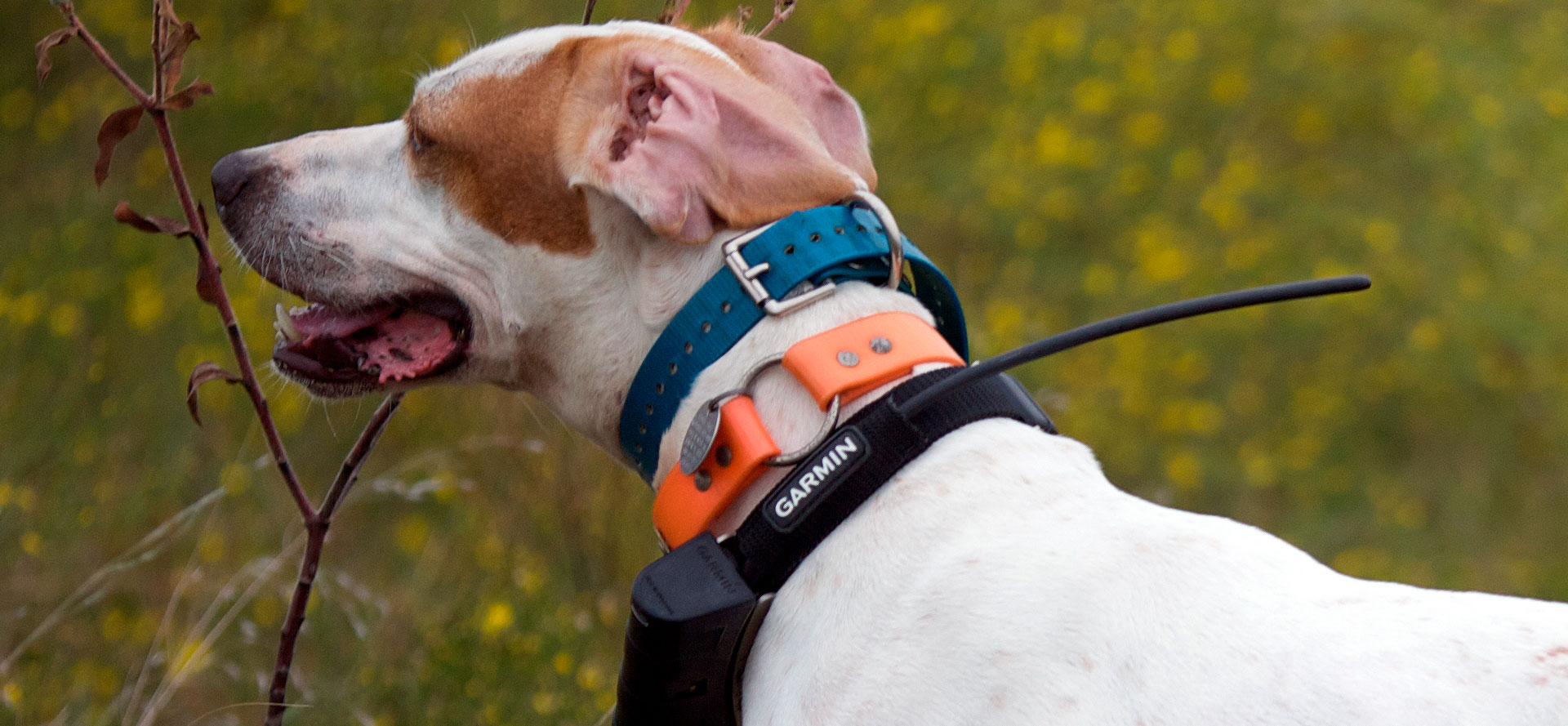
Large dogs vary widely in size and you don’t want to buy a dog shock collar that’s designed for larger dogs than yours; it can be too heavy and ultimately comfortable. Although the size description isn’t too strict with dog training collars, you still want to take it into consideration. Below is a list of features to look out for when searching for a dog shock collar:
- Rechargeable collars and transmitter.
- Remote range (how far the collar can be to receive signals from the transmitter in your hand).
- Waterproof features.
- Beep alert features.
- Multiple training modes, each with different predefined settings.
- Convenient size for your large dog.
Once you find a model that checks all the boxes for you, follow the guidelines above on how to use a dog training collar. After all that, you’ve done the majority of your part as a responsible pet parent. Now, all that remains is to keep an eye on your dog and issue stimulation when needed. Although you may need to do that less frequently, when compared to smaller dogs, large dogs are likely to dig deeper holes in your backyard so get especially ready to use your buttons when you allow it outside.
Conclusion
Over the years, pet owners have sought ways to calm their dogs to be more attentive and obedient. It was an almost impossible task to get a dog to listen to your words without the help of seasoned professionals. Today, that has changed. Dog training collars with remote access now give pet owners the ability to teach their dogs to act right by themselves.
Here’s a summary of what a dog training collar with remote access is. It is a tool that works by allowing pet parents to issue mild electric stimulation to their dogs when they act out of order. To clarify, electronic training collars are not designed to bring harm to dogs. With the right setting, the shock sensation would only feel more like a vibration than an electric shock to the dog. It is understandable to see pet parents worried about that, after all, electricity is no joking matter. Shock collars for dogs are approved by various governments around the world and certified safe, so you have nothing to worry about when using the device as long as you’re a responsible pet parent.
Dog training collars have proven to be effective in correcting bad behavior and reinforcing commands. Having a remote dog training collar also gives your dog more freedom to move around because you won’t need to have it on a leash to keep it in check. It can go anywhere and everywhere without you having to hold it via a leash every step of the way. The benefits that come with the use of dog training collars are endless but it’s up to you to decide for yourself what you are comfortable with and what is best for your dog.
If you do decide to go the route of an electric dog collar, however, know that the best training collars for dogs always deliver results. Lastly, a dog that listens to corrections and adjusts accordingly deserves praise. A dog that gets a shock stimulation when it acts wrong and gets a treat when it acts right is a lot more likely to act right. Here’s a bonus tip for pet owners that have dogs that play around water often: buy waterproof dog training collars. A waterproof dog shock collar is your best bet for a durable dog shock collar that can survive any terrain. This brings us to the end of this section of our dog training collar reviews. Thanks for reading!
Choose Dog Training Collar now
Tags: pet supplies, can dogs eat ice, martingale collar for dogs, kitten claw caps, large dog poop bags, why does my cat stare at me while i sleep, cat scratch post, remote control dog door, outdoor dog kennel covers, halloween dog bandanas

